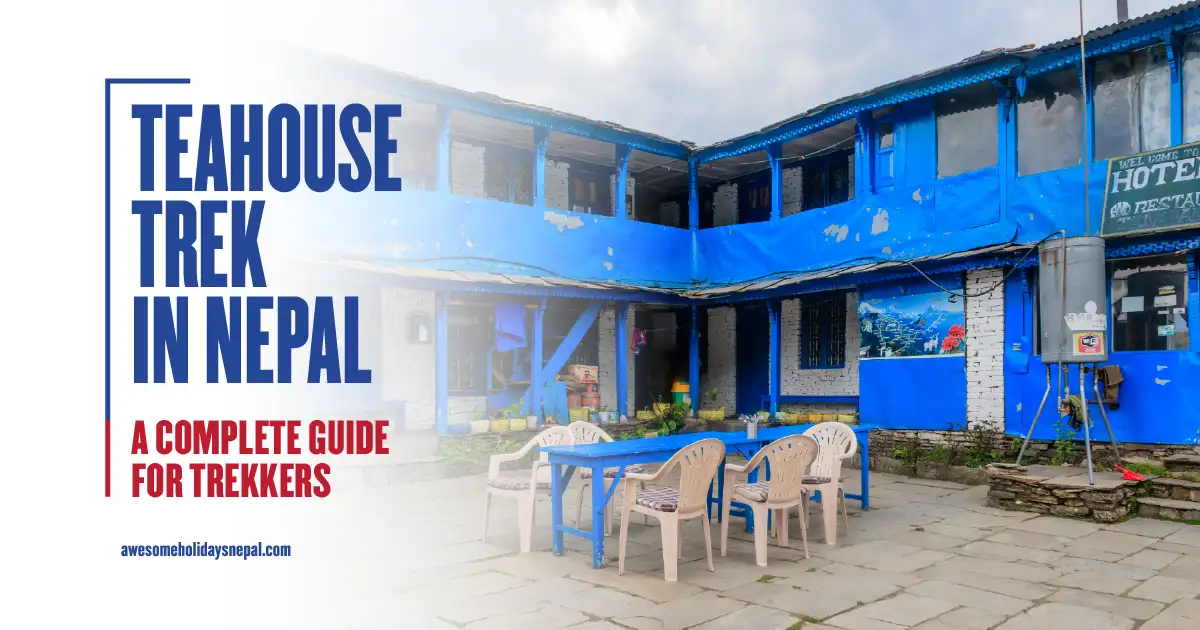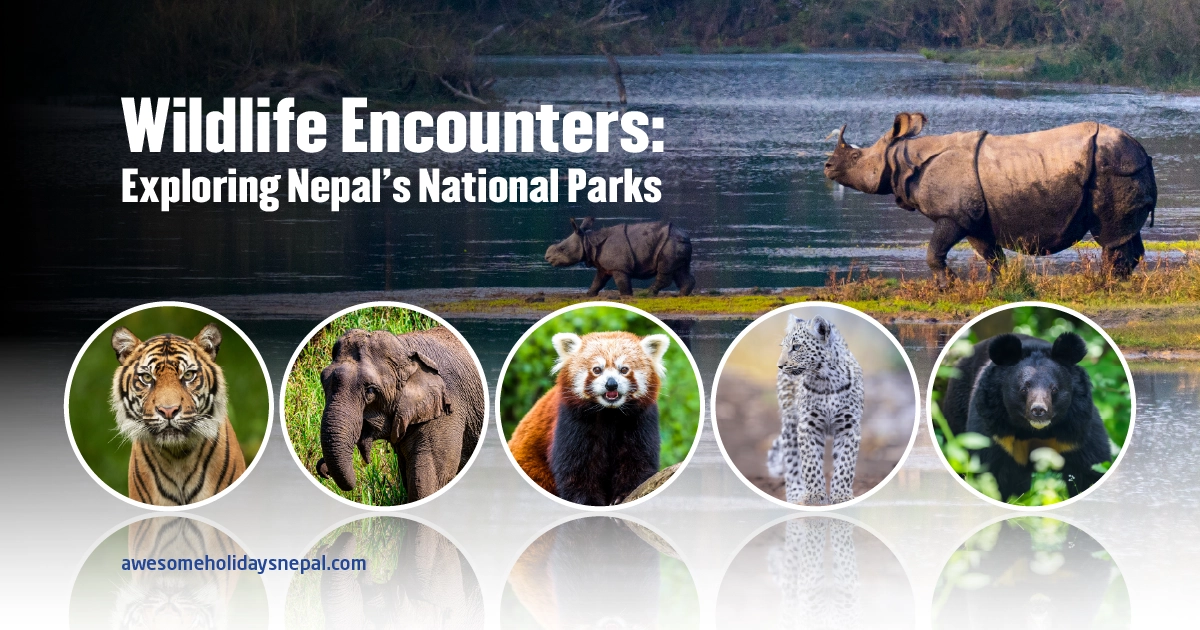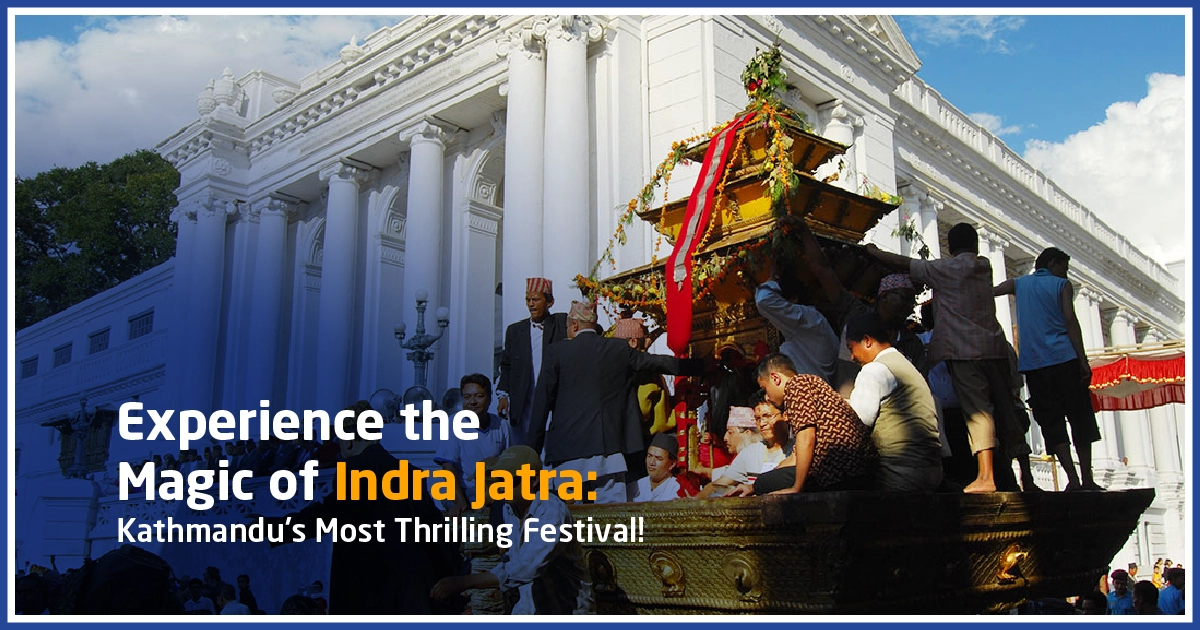21 Things Nobody Tells You About Nepal
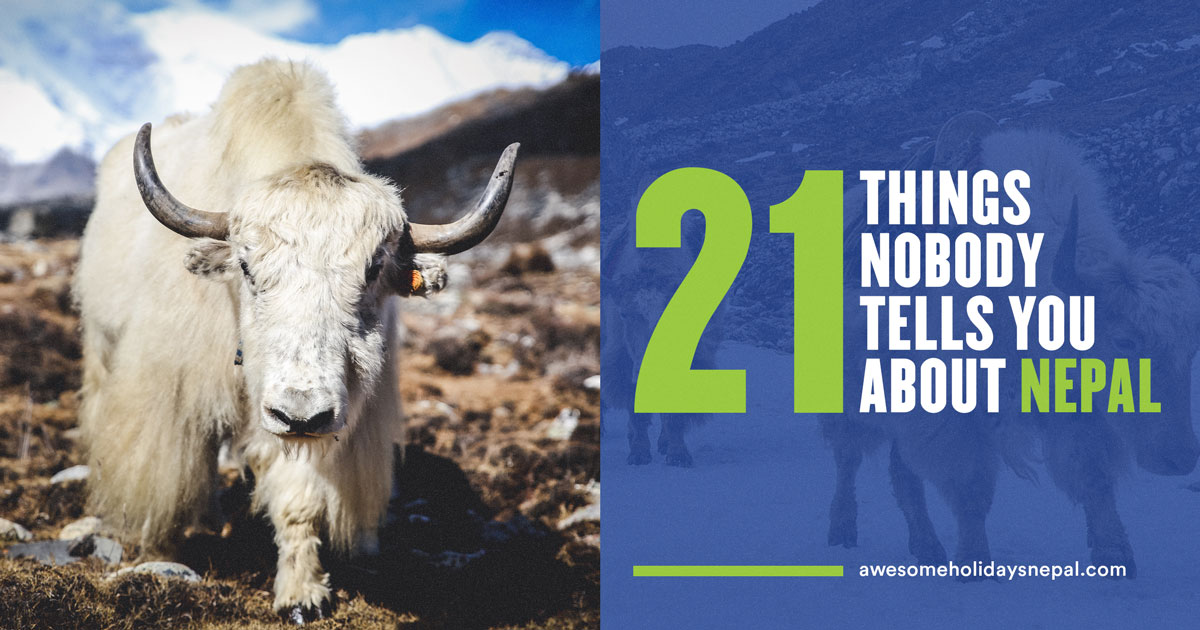
A series of snow-capped mountains, varied landscapes, lakes, and adventurous treks is exactly how people often know Nepal. But there are a lot of things to explore that nobody tells you about Nepal!
Indeed, Nepal’s forte is natural abundance and serenity, yet the country is equally rich in diversity of people and their cultural practices. People here observe different kinds of festivals around the year, offer a variety of food and cuisines, and are the most hospitable people in the world.
Intrigued to find out more about Nepalese Festivals? Then, check our article on “Top 10 Festivals of Nepal”.
And, keep reading the article to learn the best 21 things nobody tells you about Nepal.
21 Things Nobody Tells You About Nepal
1. Nepal is Inhabited by Ethnically Diverse People
Though the country is densely populated by Hindus, Nepal is actually a secular state of people from different ethnic groups and races. You will find many people practicing Buddhism and also some Christian, Sikh, and Muslim people. Despite the diversity in races, Nepali people live in harmony in a single community.
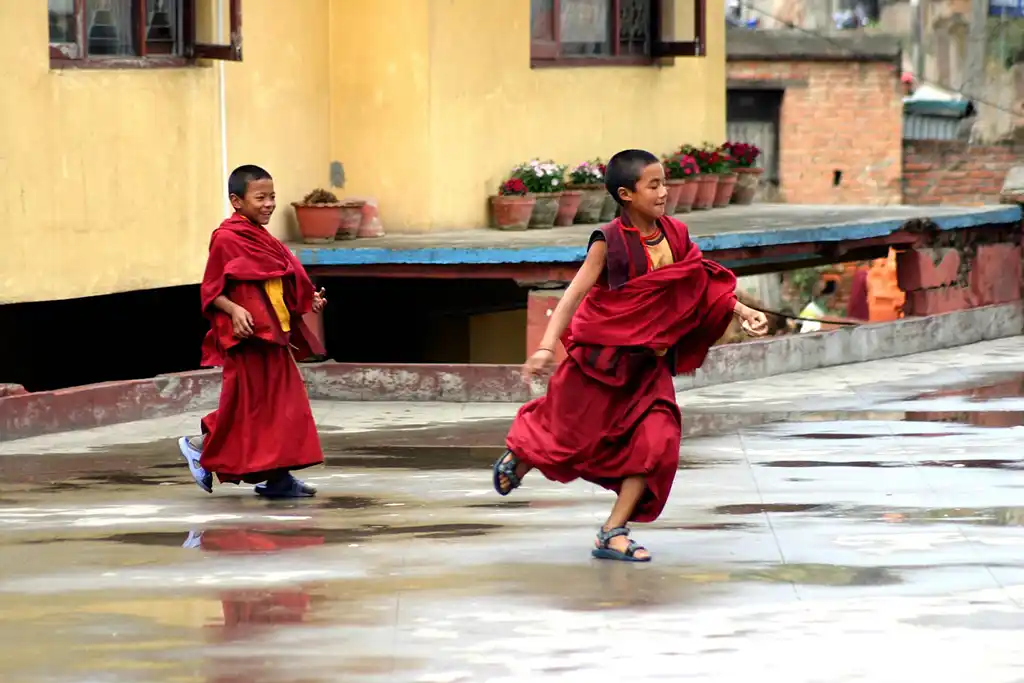
Besides, different terrains and cities of the country are populated by different races. While Sherpa people pre-dominate the Himalayan areas, the Terai region is home to ethnic races like Tharus and Madhesis. Similarly, the capital city, Kathmandu Valley, is densely inhabited by Newars, and the rest of the races are spread out throughout the entire nation.
It won’t be a lie to say that the Newar residents of Kathmandu have preserved the authentic culture and traditions. They adorn their traditional cultural attire and celebrate various jatras, festivals, and so on.
2. Every day is a Festival
Being ethnically diverse, the festivities and traditions are also equally diverse in Nepal. Although the major festivals celebrated in the country are Dashain, Tihar, and Teej, many other auspicious days are also celebrated as festivals.
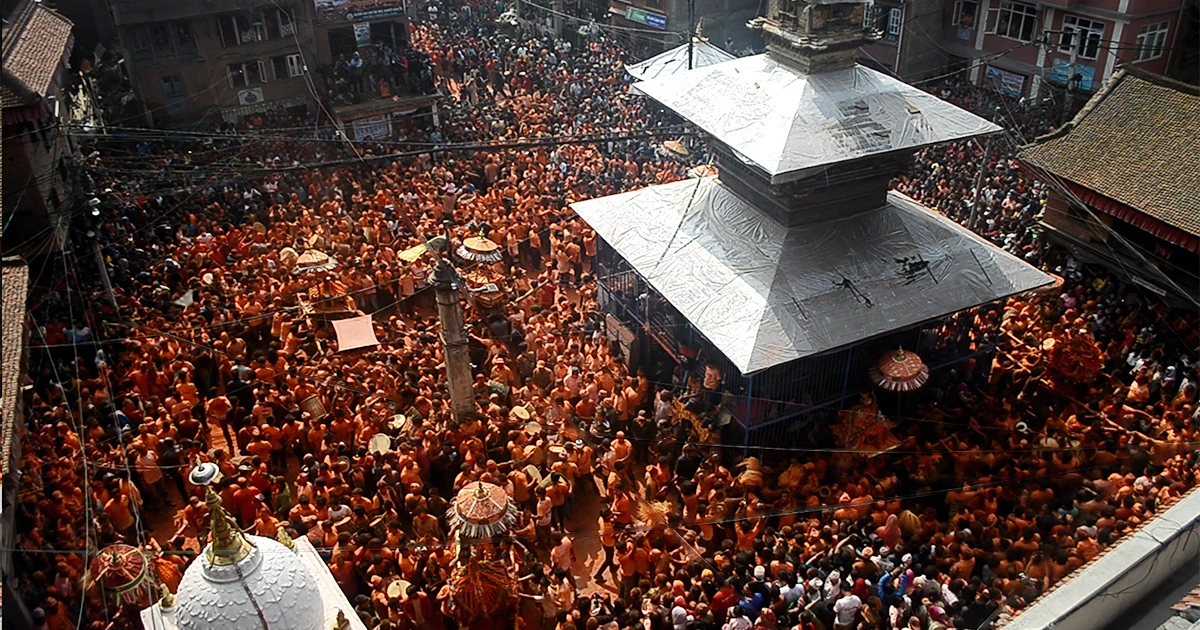
In fact, the Newari people, primarily the ones residing in the capital city have an auspicious occasion to celebrate every third day in the entire year. Some of the popular Newari fests or “jatras” are Bisket Jatra, Ghode Jatra, Rato Machindranath Jatra, Bhote Jatra etc.,
3. Nepal Proudly Holds the World’s 10 World Heritage Sites
It is a matter of pride for Nepal that it holds the record for the world’s top 10 heritages as listed by UNESCO. Out of those, 7 heritages are present in Kathmandu, the capital city of the country, and the rest are in three different regions.
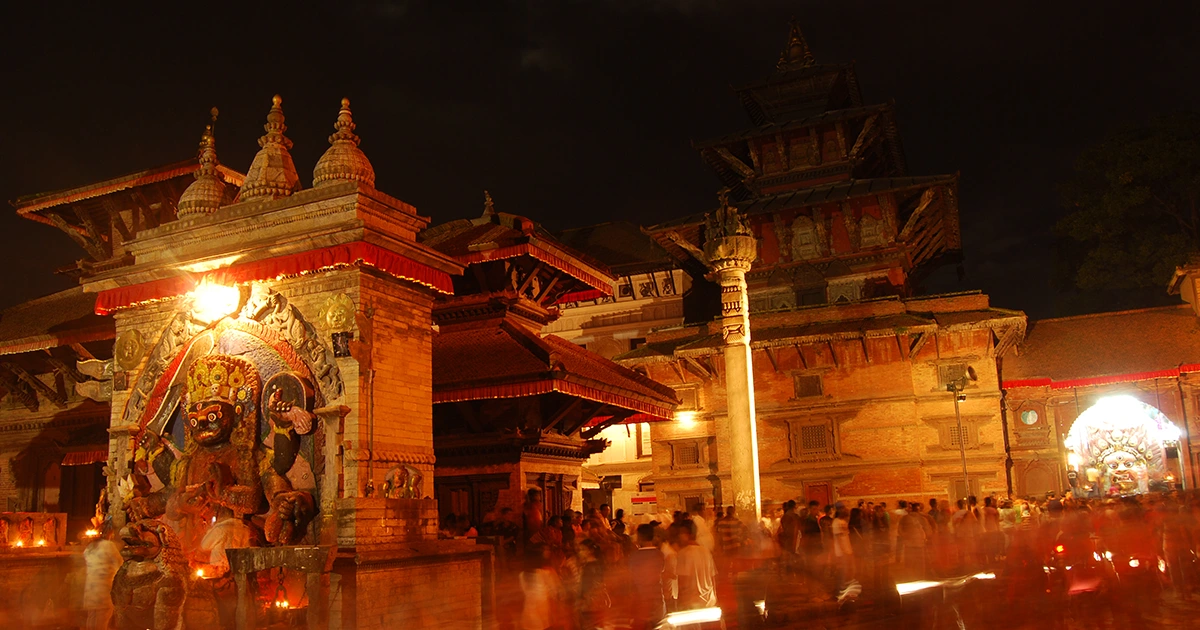
These world heritage sites are Kathmandu Durbar Square, Patan Durbar Square, Bhaktapur Durbar Square, Pashupatinath Temple, Boudhanath Stupa, Swayambhunath Stupa, Changunarayan Temple, Chitwan National Park, Lumbini, and Sagarmatha National Park.
4. Variety of Traditional Dances
Like the Nepali people, their cultural practices also vary widely based on their location, religion, and lifestyle. Despite the influence of modern culture, some communities have preserved their traditional dances throughout their generations.
Some of the most popular folk dances are Lakhey dance, Maruni dance, Dhan Nach, Sorathi Nritya, Deuda Naach, Sakhiya dance, etc. These dances are performed only on special occasions.
5. The Nepali Flag is Triangular
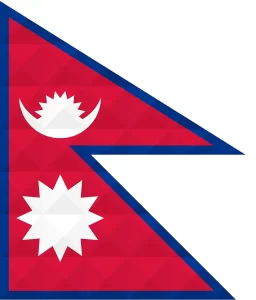
The Nepali flag is one-of-a-kind i the entire world as it is the only country with a non-quadrant flag. The Nepali flag actually is made of two cojoined triangles that are perpendicularly connected to the base pole.
Its base is red, and the border is blue. You will also see a white-colored structure in the middle of each triangle on the flag, representing the sun and moon.
6. Nepal is enriched with a Wide Variety of Floral and Faunal diversity
The vegetation and faunal species of an area depend on the elevation and climatic conditions of the region. Given the varying physio-geographic conditions of Nepal, one can see a lot of variety in its biodiversity too.
While the high altitudes have alpine and temperate vegetation, the hills have sub-tropical and the terai has tropical vegetation. Similarly, the higher altitude is inhabited by yaks, bears, and snow leopards, whereas the lower elevations are home to tigers, ghorals, and elephants.
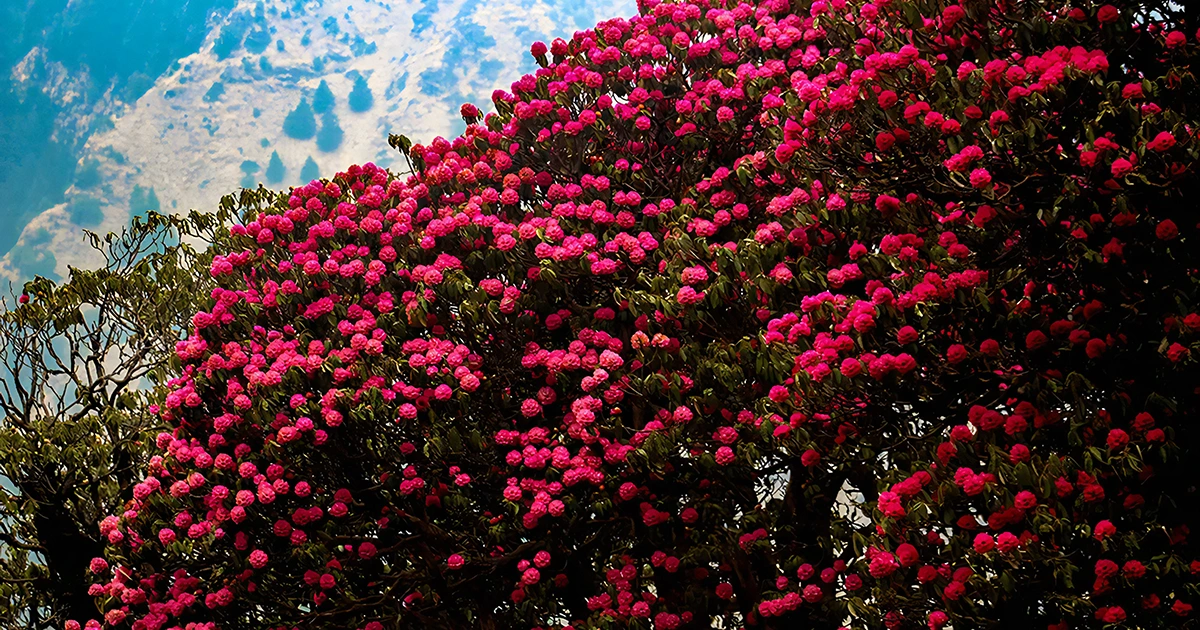
As per a recent WWF database, Nepal houses 13,067 species of plants and 17,097 different species of animals.
7. Inhabited by Many Endangered Plants and Animals
Along with a wide variety of biodiversity, the country is also home to many rare yet endangered species of plants and animals. Rhododendron, the national flower of Nepal, the Himalayan Blue poppy, and the aromatic spikenards are some of the rare plants found here.
Similarly, the forests of this Asian country are home to rare Red pandas, Snow leopards, Swamp Deer, Himalayan Musk Deer, and One-horned rhinoceros.
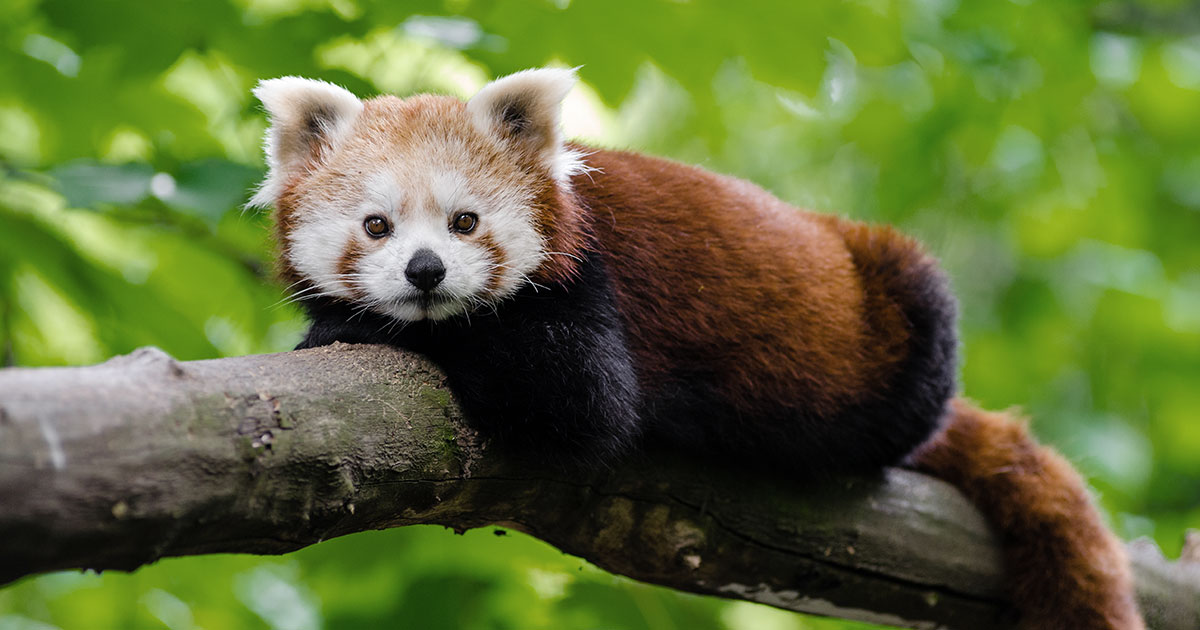
There are about 11 National Parks, 6 Conservation Areas, 13 Buffer Zones along with one wildlife reserve and hunting reserve to conserve, promote, and protect this rich biodiversity.
8. Best Place for Bird-Watching
While most of the visitors might not know it, many regions in Nepal are the best places for watching birds. Depending upon the season, tourists visit the countryside and national parks to observe the native as well as migratory birds of the country.
The Koshi Tappu Wildlife Reserve, Bardiya National Park, Chitwan National Park, and Shivapuri Nagarjun National Park are some popular bird-watching destinations.
9. Nepal is the Birthplace of Lord Buddha
Buddhism is one of the most celebrated religious practices in the whole wide world. The preaching and practices of Buddhist people originated in Nepal as the preacher himself was born here.
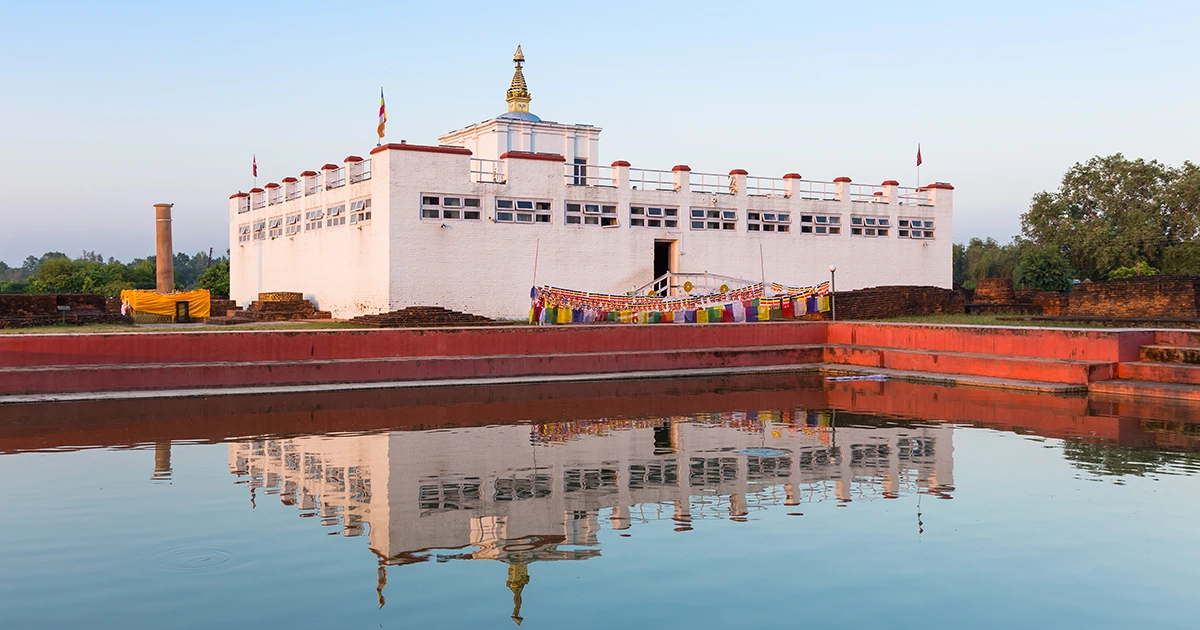
Siddharth Gautam, also known as Lord Buddha, was born in Lumbini, a city in western Nepal. He was a royal prince who left all the royal amenities and responsibilities to seek meaning in his life.
10. Nepalese Worship the Living Goddess
Have you ever heard of a living goddess? Oh yes, that’s right! While visiting the Kathmandu Durbar Square, you will see a temple on the southern side just across the historical palace building. Named Kumari temple, this intricately designed wooden building is the house where Kumari, “the living goddess,” resides.
In literal meanings, Kumari means a virgin girl, which is why young girls from the Shakya clan of the Buddhist family are chosen to respect the cultural practice. Usually, very young girls around at a very young age of 5 years are selected for the procession as a living goddess,s and they reside in the Kumari house and are worshipped at the temple.
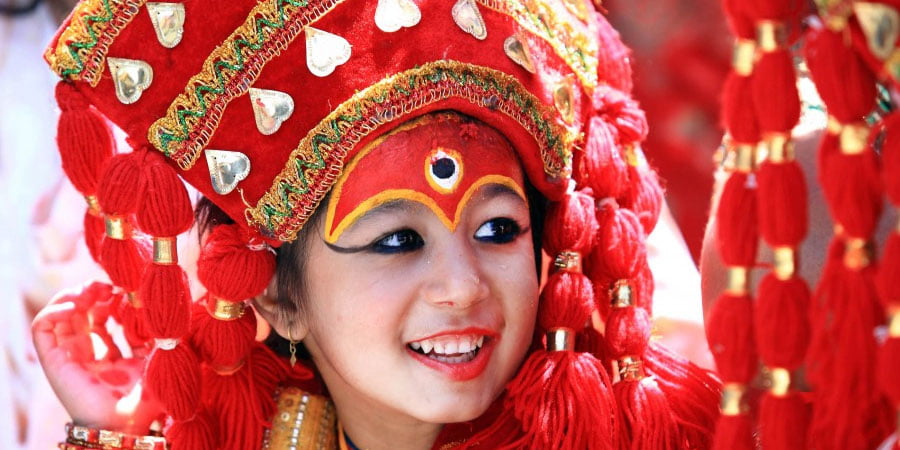
Foreigners aren’t actually allowed to worship the goddess, but can enter the temple courtyard where she gives her divine glimpse through a window. You can enter the temple courtyard early morning or in the evening after 4 pm to get her blessings.
If you are interested to learn more about the goddess, read our article on: “Why do Nepalese Worship Kumari, the Living Goddess of Nepal?”
Why do Nepalese Worship Kumari, the Living Goddess of Nepal?
11. Lakes, Rivers, and Mountains are Sacred in Nepal
You will certainly find several lakes, rivers, mountains, and green hills, but these also hold religious values for Nepali people. Most of the rivers are places people go to take sacred paths and purify themselves from sins, and they are also places to burn off the dead and say their final goodbyes.
Gosaikunda, which is one of the most popular trekking destinations, is also a place where Buddhist and Hindu pilgrims visit during August. Similarly, the temple “Muktinath” in the lower Mustang is also often visited by pilgrims. Kalapathar, a peak that comes across en route to the Everest base camp, is also a pilgrimage.
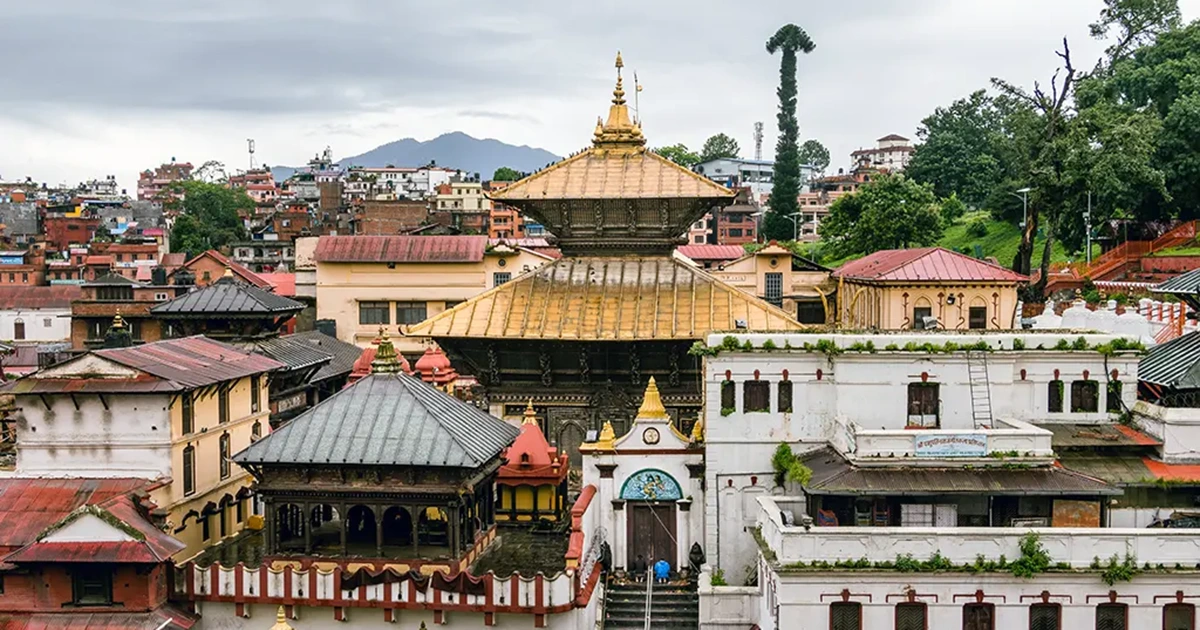
Similarly, many tourist destinations such as Lumbini, Peace Pagoda of Pokhara, Kanjin Gompa of Langtang valley, and Pashupatinath temple of Kathmandu are sacred heritages.
12. Pilgrimage Tour is a Common Thing
If you are a Westerner, you might not have heard often about Pilgrimage tours, but to Asians, specifically South Asian people, it is a big deal. Many domestic and international tourists who follow or preach Hinduism and Buddhism often visit Nepal as a pilgrimage.
While Buddhists mostly visit Lumbini, the Stupas of Kathmandu, and Monasteries in the Himalayas, Hindu people visit Muktinath Temple in Mustang, Pashupatinath and Budhanilkantha temples in Kathmandu, Taplejung district for holy blessings of Hindu gods.
13. Nepal is Home to Eight of the World’s Tallest Peaks
One of the reasons why most adventure seekers visit Nepal is that it is home to about 488 peaks that are open for climbing. Among these, eight are the tallest peaks in the world with elevations over 8000 meters, including Everest, Manaslu, Makalu, Kanchenjunga, Annapurna, Cho Oyu, Lhotse, and Dhaulagiri.
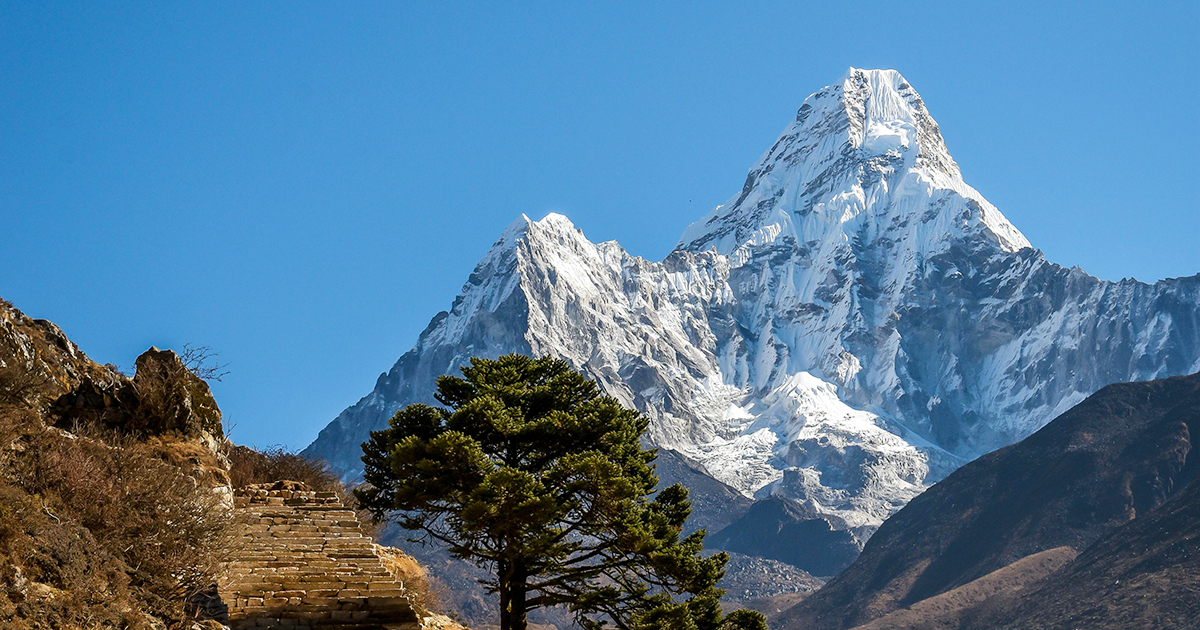
Not only are these mesmerizing to look at, but these peaks also offer different types of terrains, routes, and variations to adventurers.
14. Nepali People are the Most Hospitable Hosts
Guests are considered equivalent to gods in Nepal; because of this, you will receive the most amazing hospitality everywhere you visit in the country. Indeed, Nepal has a diverse culture and people with different beliefs, yet the hospitality will be the same.
May it be a local teahouse where you will stay during the trek or the restaurants you visit, you will always receive a warm welcome. Indifferent to the star rating or payment made, the behavior towards visitors is always welcoming, and so is the service.
15. A Culturally Diverse Country
Nepal doesn’t only have variation in its landscapes or natural diversity, but people who live there are equally diverse yet live in harmony. The most notable king in the history of Nepal, Prithvi Narayan Shah, stated Nepal as a garden of 4 castes and 36 subcastes. It means that culturally diverse people who belong to different ethnic groups live in harmony in the country.
Every other city or settlement you visit in Nepal is most likely to have a different set of cultural practices. While in the higher Himalayas, you will see people practicing Tibetan-Buddhist culture, the lower areas have pretty mixed races of people, and so their culture.
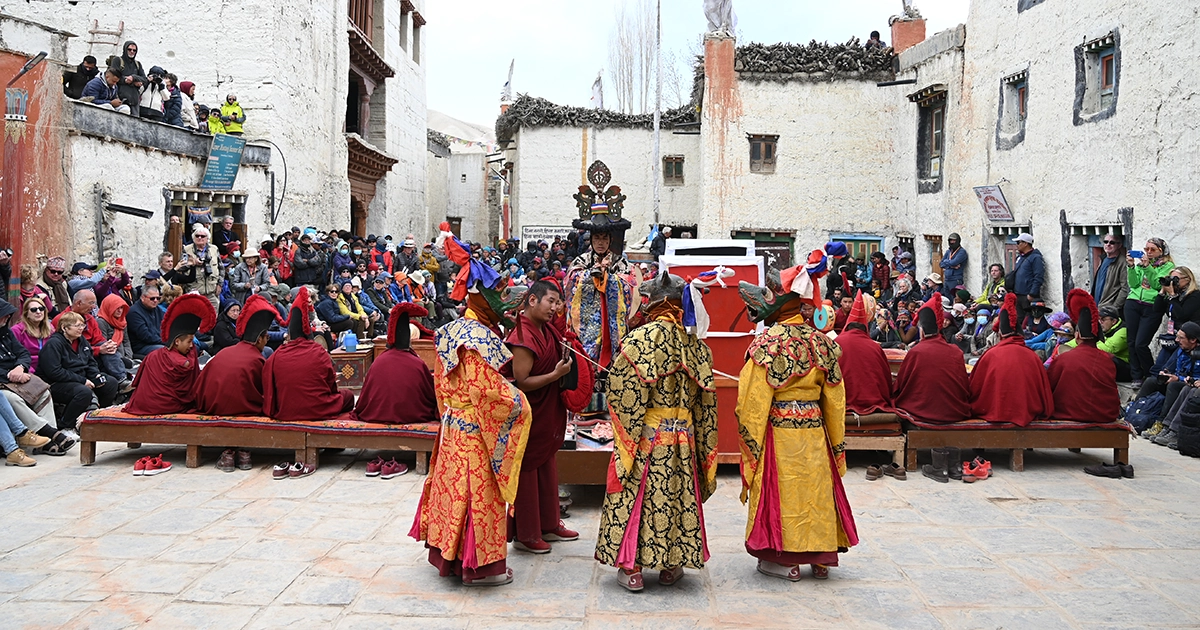
Similarly, the plain terrains of the Terai region are populated by ethnic people like Tharu, and some areas have Madhesi people. So their cultural practices vary vastly.
16. Nepal has Never Been Colonized
It is a matter of fact, this small piece of land locked between the biggest nations like China and India has never been colonized in the course of history. This is one of the reasons why Nepalese people never celebrate Independence Day.
Some stories do tell that the East India Company, which took over India in the mid-seventeenth century, tried to conquer Nepal but was unsuccessful.
17. Nepal was Declared a Secular State
Initially, most people knew Nepal as a Hindu nation, as it was densely populated by Hindus. However, the Nepali Constitution was amended in 2015 to address multiple races, religions, and culturally diverse people settled in the country.
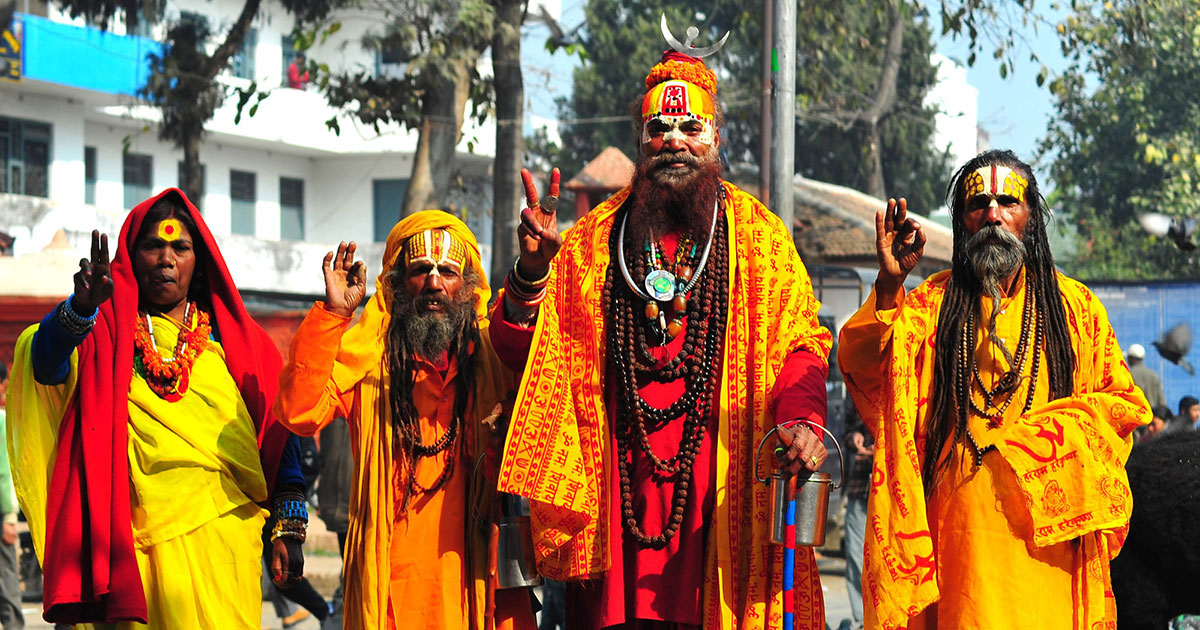
Since then, Nepal has been officially declared a secular state where people from multiple religions co-exist. Additionally, the country has never seen a war in the name of religion or race of people. To be honest, Nepali people are very simple, honest, and peace-loving people.
18. Squatty Toilets are Quite a Common Thing
If you are used to the Western-style loos, then it might be a little struggle for you to adapt to the squatty toilets in Nepal. Even though the three-star and five-star accommodations in the city areas do have toilet bowls, the washrooms on the trek will mostly require you to squat.
Given the hygiene practice, squatty toilets are actually a good thing to have in public spaces, even more so on the trekking route.
19. Nepali Lifestyle is Influenced by Indian and Chinese
One of the things that nobody tells you about Nepal is its relationship with its neighboring countries. Being geographically sandwiched between India and China, the Nepali lifestyle is heavily influenced by both countries. People have migrated from these countries and often settled down, which is why you can find a lot of cultural influence too.
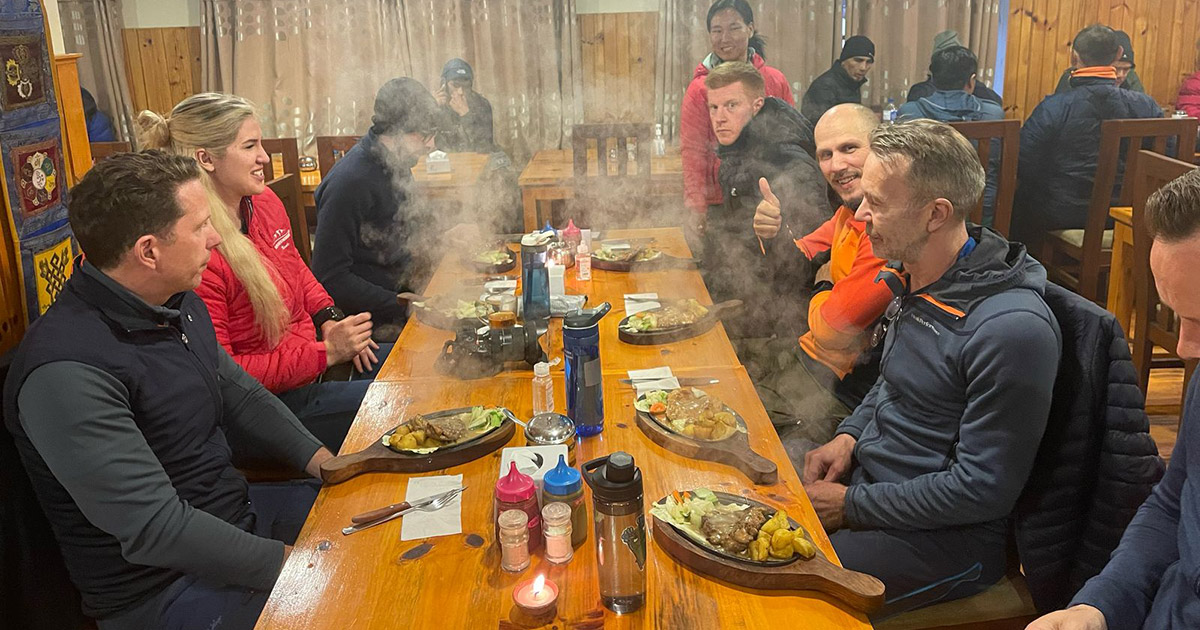
From the food found in Nepal to the festivals celebrated and the clothing styles, India has had an influence. Mostly, you will find Chinese food like Kungfu Noodles, Chowmein, Soup dumplings, and Szechuan cuisine in the popular streets of the country. Whereas Indian food is a very common delicacy on every other street.
20. Nepal was Once Called a Weed Capital
Many might not be aware of this, but Nepal was once considered the infamous weed capital of the world. A major reason behind the name was that the rural farmlands, close to the rugged mountains which were favorable for growing weeds.
In fact, the country was a common ground for weed lovers around the world, and they often visited Nepal only for weed. People would often gather in the freak street of Kathmandu to smoke a pot or get a stash for themselves. But when weed was illegalized in 1973, this trend of tourism broke off.
21. Monarchs Ruled the Country Until the Early 21st Century
Nepal was always ruled by monarchs until a major conflict occurred between the government forces and the insurgent forces of the Communist parties in the country. Following a royal massacre of the year 2001, the monarchy was abolished in the year 2008, and a new governance system was implemented.
Although some kings and queens still reside in the country, they no longer play a part in the country’s governance under the constitution. However, you can visit the royal palaces that are now converted into museums to take a peek at the royal lifestyles in the past.
Nepal Beyond Facts
Even though we have mentioned some of the fascinating facts about the Himalayan country, Nepal, there’s still more to discover. You will have to see the beauty of Nepal for yourself and trek through the unexplored rustic terrains to see its true form.
Book your trip or trek to these diverse lands of Nepal to experience more of what Nepal has to offer.
Love Nepal and its uniqueness!
FAQs
Expand AllWhat is the rarest thing in Nepal?
The exceptional natural beauty, diverse landscapes, and diverse culture is the raret thing in Nepal.
What are the best things to buy in Nepal as souvenirs?
The best things to buy in Nepal as souvenirs are Pashmina shawls, Thangka paintings, singing bowls, prayer flags, and Khukuri knives.
Are things cheap in Nepal for tourists?
Yeah, the things in Nepal could be cheaper for tourists.
What is the most famous thing in Nepal?
The most famous thing in Nepal is Mount Everest, biggest mountain in the world.
What are the national pride things of Nepal?
The national pride things of Nepal are nation’s unique flag, the national anthem, the Gurkha soldiers, Mount Everest (Sagarmatha), Lumbini (Buddha’s birthplace), Pashupatinath Temple, and the one-horned rhinoceros.
Can you send things from Nepal to the US?
Yeah, you can send things from Nepal to the US.
What are the things that introduce Nepal to the world?
The things that introduce Nepal to the world are the magnanimous Himalayas like Mount Everest, the birthplace of Buddha, and the country with non-rectangular flag.
Which thing grows most in Nepal agriculturally?
Rice (known as paddy) is the most grown thing in Nepal agriculturally.
Is Bratabandha the same thing as Mundan in Nepal?
No, Bratabandha is not the same thing as Mundan in Nepal.
Why do most of the people don't know about Nepal?
Most of the people don’t know Nepal due to combination of factors like landlocked country, low global profile, and small size.
Related blog posts
Discover a choice of tourist destinations loved by most of our visitors. Whether you're on a jungle safari to spot rare animals or walking through a world heritage site, these well-planned itineraries cover the major highlights of Nepal.


